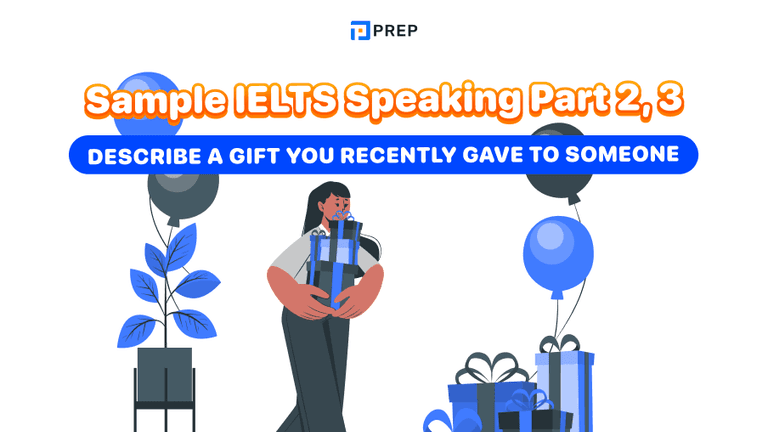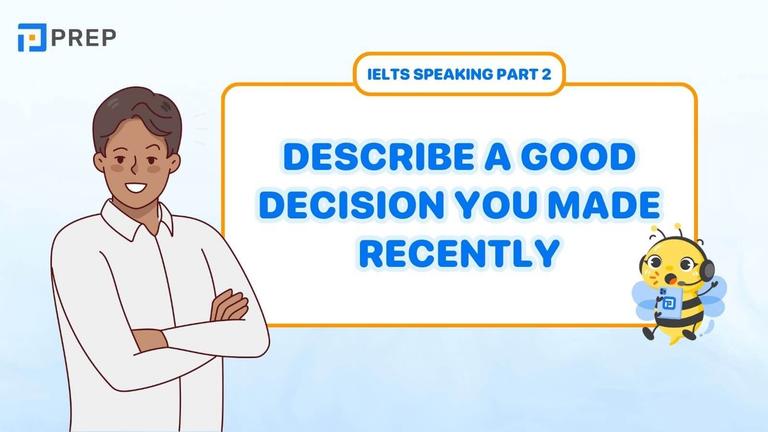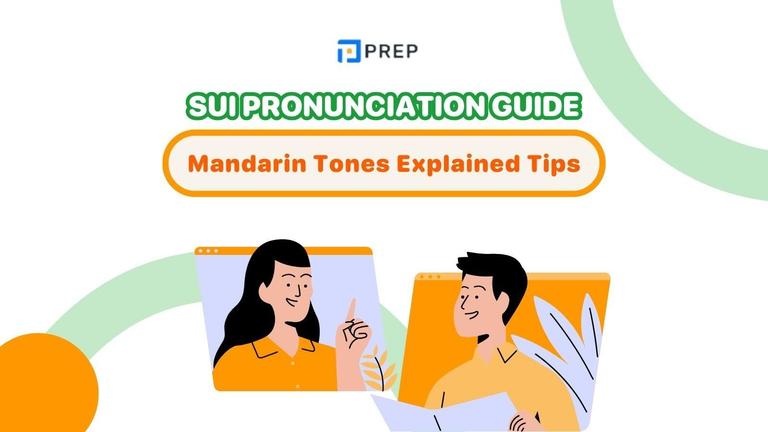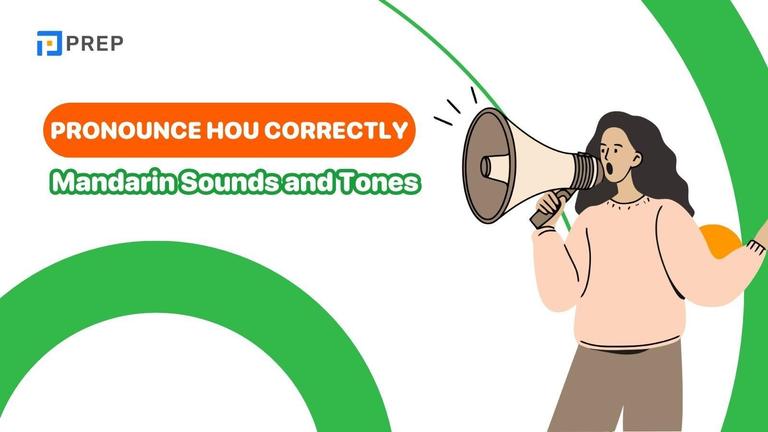4 Steps to tackle True/False/Not Given questions in IELTS Reading
Are you preparing for the Reading section but unsure of the appropriate study method? Do you feel overwhelmed by the question types in the IELTS Reading test? Are you extremely worried when encountering True/False/Not Given questions in IELTS Reading? In this article, prepedu.com would like to share with you Preppies the "key" to conquer True/False/Not Given question types. Let's explore and carefully analyze the approach to excel in this question type and achieve a high score on your Reading test!
- I. Overview of True/False/Not Given questions in IELTS Reading
- II. How to easily approach True/False/Not Given questions in IELTS Reading
- III. Some tips for accurately answering True/False/Not Given questions in IELTS Reading
- IV. Exercises on True/False/Not Given questions in IELTS Reading with answers
- V. Master IELTS With Confidence
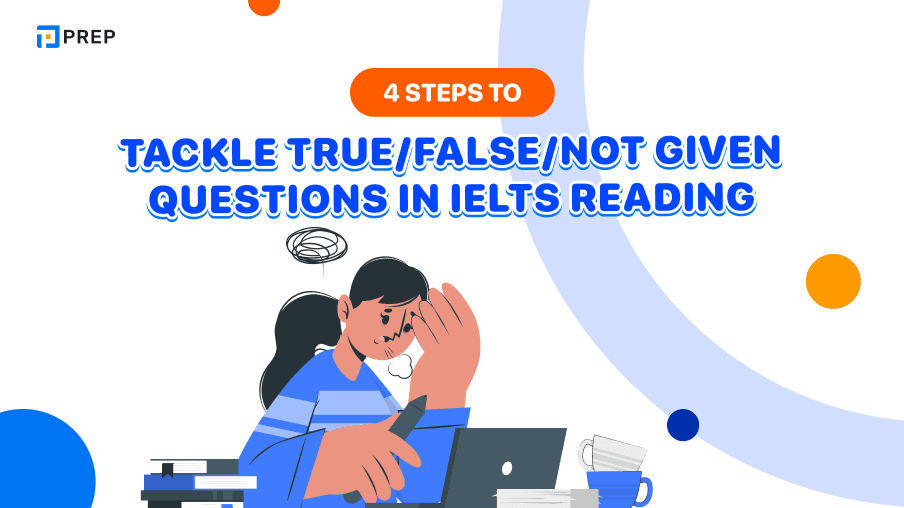
I. Overview of True/False/Not Given questions in IELTS Reading
1. What is the True/False/Not Given questions in IELTS Reading?
The True/False/Not Given question type requires candidates to determine whether the statements in the question are true, false, or not given based on the information mentioned in the passage, or if no information is provided in the test.
When answering True/False/Not Given questions, candidates need to verify whether the facts in the question are true/false or can't be found in the passage. This is a relatively easy question type but can be challenging for many candidates who haven't grasped its essence. There are two main types of True/False/Not Given questions:
- True/ False/ Not given referring to an entity.
- True/ False/ Not given in a comparative form.
Note: If the IELTS Reading task only requires determining T/F, everything becomes much simpler. However, many candidates often spend a lot of time on these judgments in the question because:
- They are afraid of confusing NOT GIVEN with FALSE, which leads to hesitation in choosing between the two answers.
- They solely rely on keywords in the passage, which prevents them from understanding the meaning of the statements in depth. When they see keywords, they immediately choose TRUE/FALSE without paying attention to the specific content of the statements.
2. Required skills in True/False/Not Given questions in IELTS Reading
To perform well in True/False/Not Given questions, candidates need the following skills:
- Accurately identify specific information in the passage.
- Candidates must review and understand all the information (in T/F/NG question format).
- Candidates must understand the author's specific viewpoint (in Y/N/NG question format).
3. Format of True/False/Not Given questions in IELTS Reading
Below is a sample format of the True/False/Not Given question type in real IELTS Reading tests:
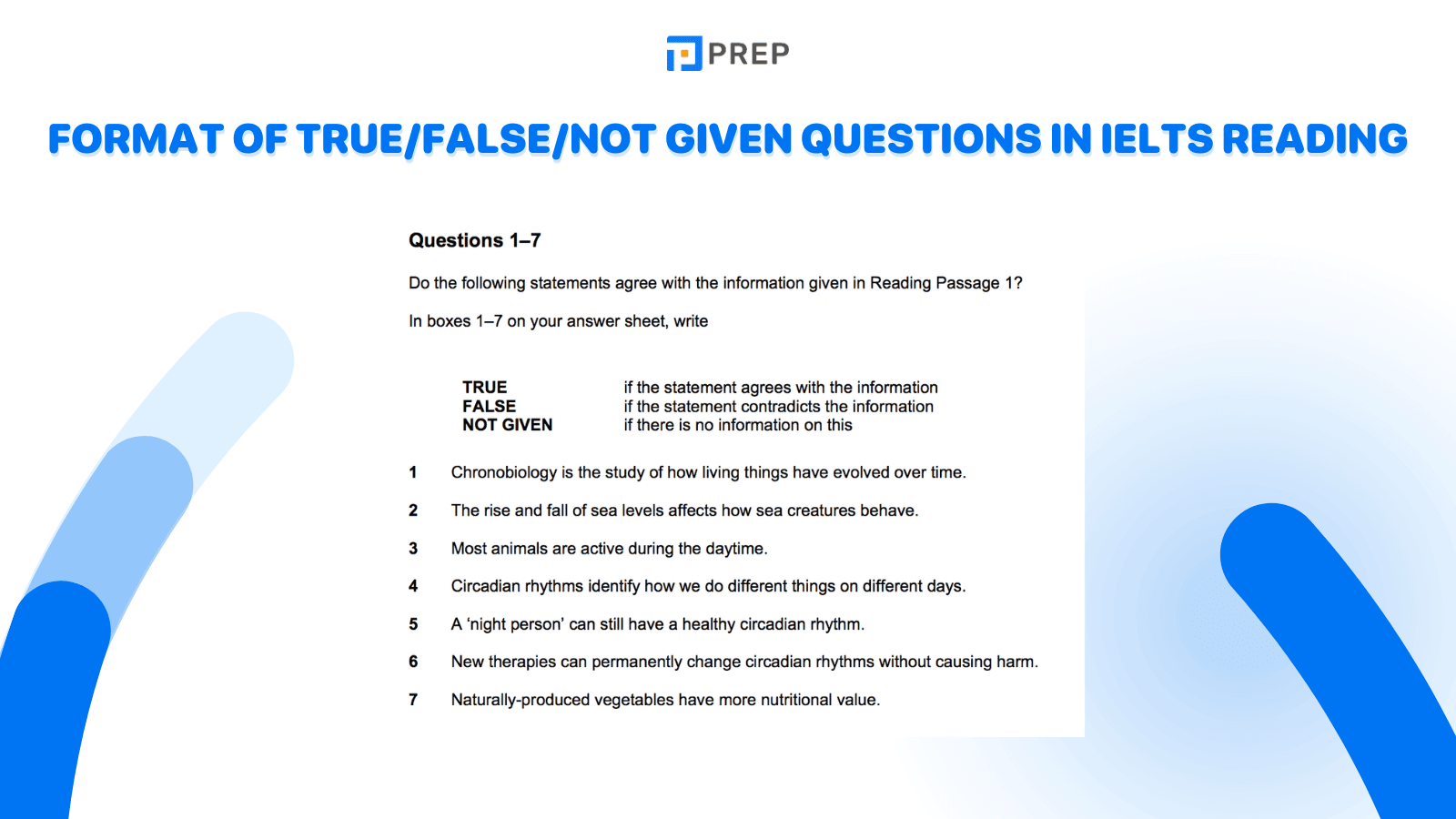
II. How to easily approach True/False/Not Given questions in IELTS Reading
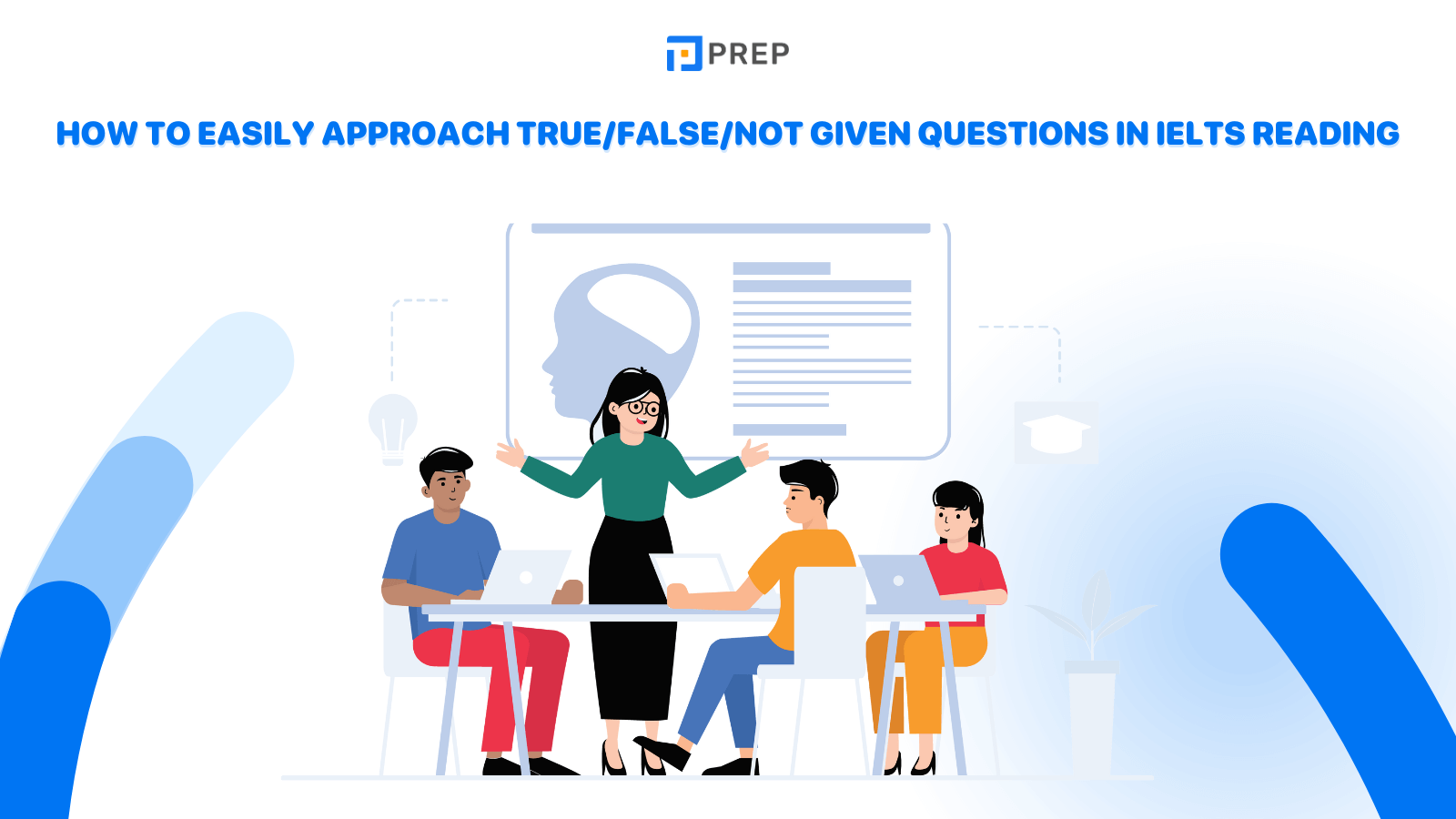
This is not a difficult question type, but to fully conquer it and achieve a high score, you need to read and understand it carefully. Refer to the following 4 steps to practice effectively and achieve a high band score in the real IELTS test at home:
- Step 1: Read the question carefully to determine the T/F/NG format: Read the question carefully to identify whether it is a T/F/NG or a Y/N/NG format (do not confuse between these two question types as writing the wrong answer will result in no points).
- Step 2: Read all the questions and underline the key terms: Underline keywords, and pay attention to certain keywords such as PROPER NAMES, NUMBERS, TECHNICAL TERMS, etc. Be cautious of key extreme words that can deceive the reader, such as "only," "all," and "never". For example:
- Michael Faraday was the first person to recognize Perkin’s ability as a student of chemistry.
- Michael Faraday suggested Perkin should enroll in the Royal College of Chemistry.
- Perkin employed August Wilhelm Hofmann as his assistant.
- Perkin was still young when he made the discovery that made him rich and famous.
- Step 3: Scanning: Scan to find the keywords in the passage and carefully read the sentences containing the information. Compare the pairs of keywords and find the answer.
- Step 4: Write the answer immediately, without leaving the answer sheet blank: Note that you should never leave the answer sheet blank (try to eliminate options to increase accuracy).
III. Some tips for accurately answering True/False/Not Given questions in IELTS Reading
1. Tips for answering True/False/Not Given questions in IELTS Reading (single entity)
True/False/Not Given questions (single entity) are not frequently seen in real IELTS Reading tests. So, how should you approach this question type? Refer to the tips for selecting the correct answer in the image below:

2. Tips for answering True/False/Not Given questions in IELTS Reading (comparative form)
True/False/Not Given questions (comparative form) - this is the question type that many candidates often get wrong in real tests. The trap in this question type lies in the comparison between two entities. To handle this question type and achieve a high score, refer to the image below:
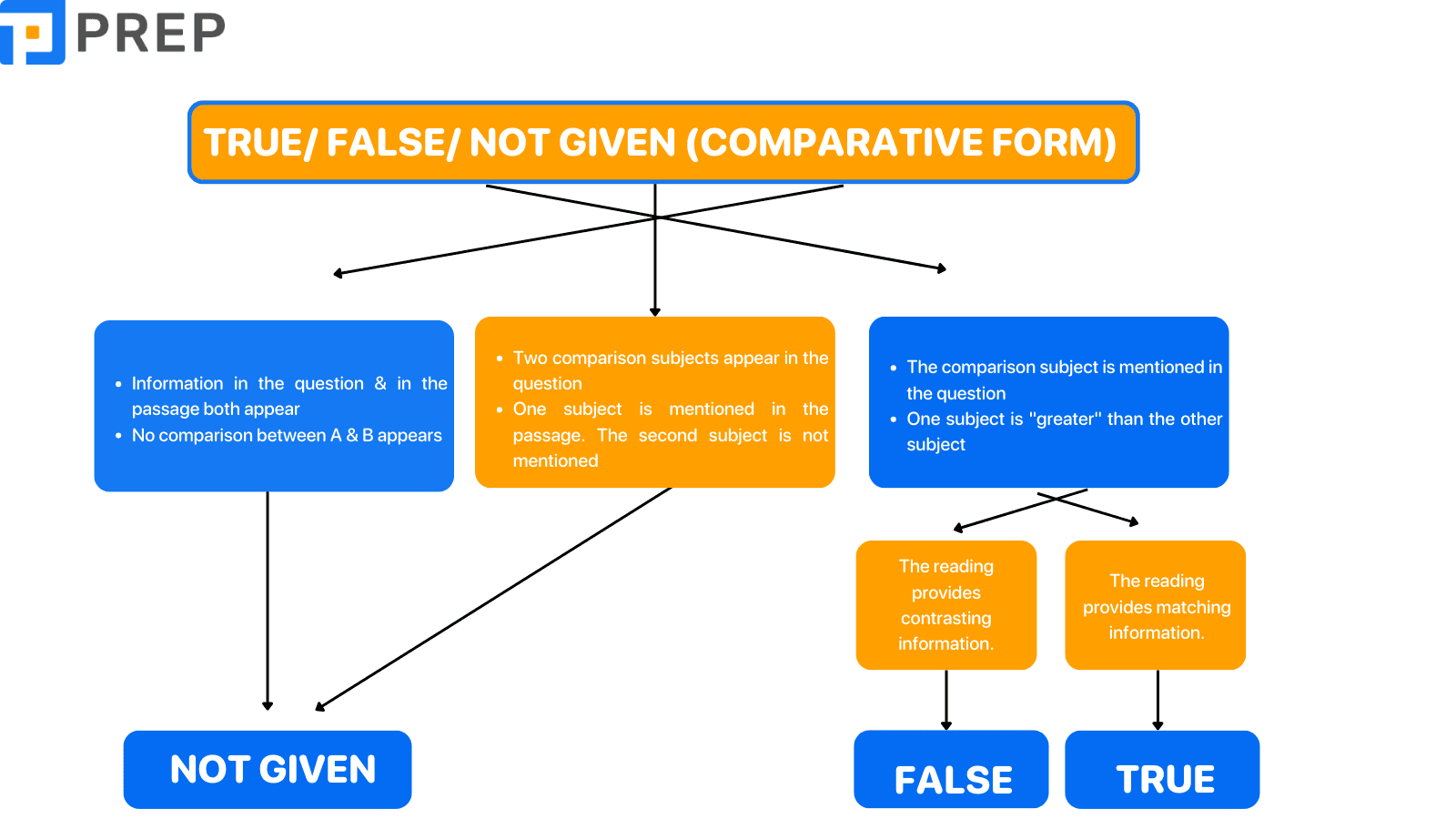
3. Tips for handling True/False/Not Given questions in IELTS Reading quickly:
To effectively answer True False Not Given questions, you need to master some tips, and some strategies for answering True False Not Given questions as follows:
- The answers to the questions will be arranged in order: The first tip is to find the answers to the questions in order from the beginning to the end. Answer 1 may be in paragraph 1, answer 2 may be in paragraph 2,... answer 5 may be in paragraph 5 or 6. Therefore, be quick and careful in searching for the answers in order!
- Caution above all: Not Given does not mean there is no information. Often, the information for a "Not Given" question will appear in the passage, but that information is not used to answer the given question. In many cases, you can easily be misled by verbs that are missing or words with opposite meanings in the passage. So be careful not to lose points unfairly.
- Avoid overthinking: You should not guess or infer information that you think is correct based on your subjective opinion. The information to answer the question is only in the passage → DO NOT overcomplicate your thinking.
IV. Exercises on True/False/Not Given questions in IELTS Reading with answers
If you are looking for more True/False/Not Given practice exercises, then register for the IELTS Basic Listening-Reading course and the IELTS Advanced Listening-Reading course to practice this type of exercise comprehensively.
In addition, here is a PDF file of True False Not Given exercises compiled by prepedu.com. Download this True False Not Given exercise to practice proficiently at home and boost your confidence in tackling the IELTS Reading test:
V. Master IELTS With Confidence
This article has provided some ways to approach True/False/Not Given questions in IELTS Reading as well as effective tips for quick and easy reference. If you’re ready to boost your IELTS band score, check out our expert-led courses below:
- IELTS full course: Master Every Section of IELTS

Hi I'm Chloe, and I am currently serving as an Product Content Administrator at Prep Education. With over five years of experience in independent online IELTS study and exam preparation, I am confident in my ability to support learners in achieving their highest possible scores.
Comment
Premium content
View allPersonalized roadmap
Most read


